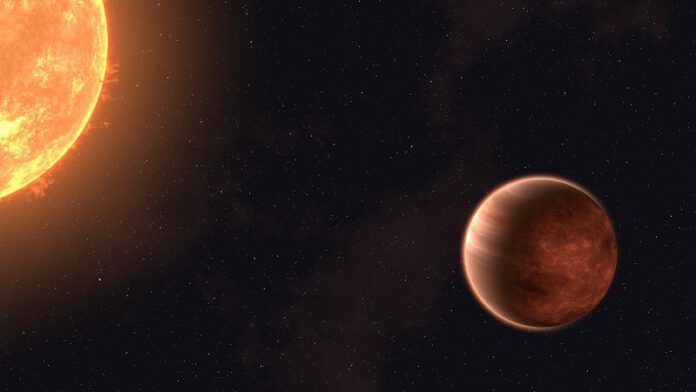
James Webb has finally shed more light on the mysterious exoplanet WASP-43b. The most significant finding: it turns out that there is no methane on the side of the planet where it is always night, as was previously believed. This is likely due to the intense winds not allowing enough time for methane to form.
Research from International Scientists
Scientists from various parts of the world, including those from prominent universities, present these findings in Nature. Utilizing the renowned space telescope, they followed WASP-43b and its star for an entire planetary year. Interestingly, a year on this exoplanet doesn’t amount to much: it completes a full orbit around its star in just 19.5 hours.
A Glimpse of WASP-43b
What we know so far about WASP-43b is that it orbits a star dubbed WASP-43, located 284 light-years away from Earth. The exoplanet is roughly the same size as Jupiter, but much hotter. Only once has a planet been found that orbits closer to its star.
On one half of WASP-43b, it is perpetual daylight, and on the other half, it is always night. It was already known that there is no methane on the constantly illuminated side due to its scorching 1250 degrees temperature, which is too extreme for the gas. However, the dark side of the night is a ‘pleasant’ 600 degrees, which should be a suitable temperature for methane. Yet, it was not found there, and scientists believe this is due to the extremely strong wind. The wind speeds can reach up to 7500 kilometers per hour on the planet, which doesn’t allow enough time for a detectable amount of methane to form.
Presence of Water Vapor
One thing we know exists on both sides of the planet is water vapor. The Hubble had already found water on the day side, but the night side was too dark for that telescope. James Webb was able to detect water on the dark side, though. “It’s amazing that we can now explore the cold, dark side of exoplanets,” says researcher Nicolas Crouzet. “This gives us a much broader view of their atmospheres and really helps to understand what’s happening there.”
A First Time for Everything
This has been a significant adventure to determine whether the exoplanet has water and how warm it is. In fact, this is the first time researchers could so clearly determine the temperature and composition of an exoplanet’s atmosphere. This was made possible by James Webb’s ultra-precise MIRI instrument, which allowed them to capture the planet’s faint emission. The hope now is to map more exoplanets in the same way and, if better space telescopes become available, to also explore the atmospheres of exoplanets that are more similar to Earth.
A New Era
Researcher Jean-Michel Desert sees these findings as a pinnacle of expectation and wonder. “It has been such a journey from the moment we designed the phase curve observation to the breathtaking 3D map of this planet. In my opinion, this observation represents a new era in our exploration of exoplanet atmospheres.”











